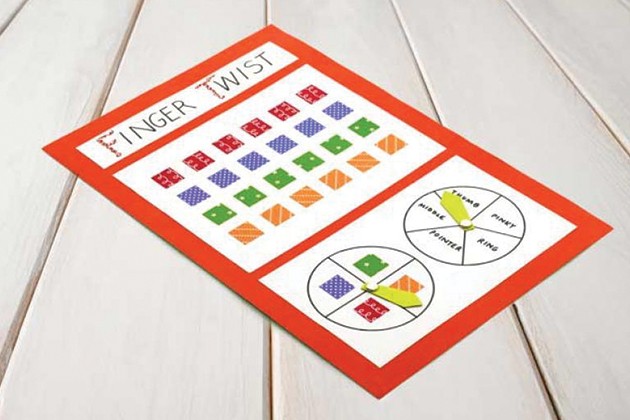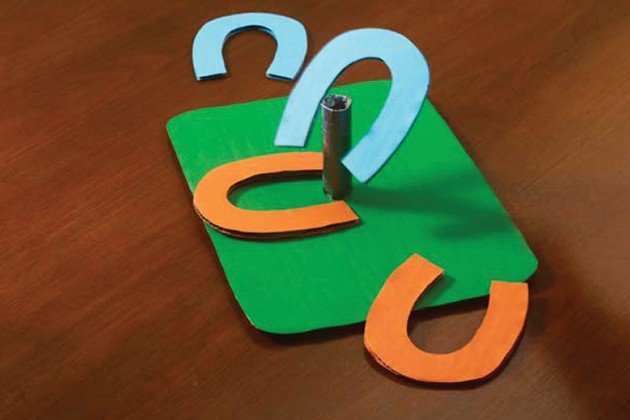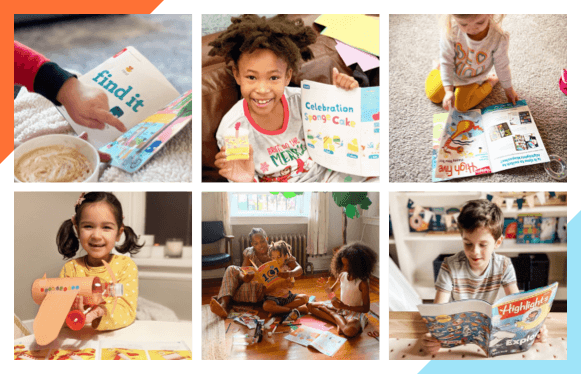Finger Twist Game for Kids
By: Amy Ward
Get little fingers moving, wiggling and reaching with this finger twist game. Kids spin the two spinners and move their fingers as directed. The player who keeps their fingers down the longest wins. And because your kids make the game board themselves, they can customize it however they want—use stickers in place of paper, shapes in place of colors, etc.
What You'll Need
What to Do
-
Cut seven 1-inch squares from each of the four colored papers.
-
Glue six squares of each color in rows on a piece of cardstock.
-
Cut a strip from another sheet of cardstock. Use a marker to write “Finger Twist” on it.
-
On another piece of cardstock, draw two circles. Divide one circle into four sections, and glue on the remaining colored squares. Divide the other circle into five sections and write the names of the five fingers.
-
Glue the three sections of cardstock to the poster board.
-
To make the spinners, cut two arrows from cardstock. Punch a hole in the end of each one. Attach the arrows to the center of each circle with a metal fastener.
How to Play:
Players take turns spinning both spinners. The finger spinner indicates which finger should be used. The colored square spinner indicates which color players should put their finger on. For example, if the spinners land on “thumb” and “red,” place your thumb on a red square.
Players may not lift their fingers between turns.
The player to keep their fingers down the longest wins.
Extend the Fun
Younger children: It might be enough for younger kids to just focus on color or finger. Start with the color spinner and let your child use any finger on the correct color. Then switch it up by using the finger spinner but one color.
Older children: As your child makes the board, have them count the number of 1-inch squares that they glue down. Ask your child to count how many there are of each color and then count how many squares are on the board altogether. (Bonus points if your child includes the squares that are in the spinner.) If your child is adept at counting, vary with your questions. For example, you might ask: How many red and blue squares are there? If there are four rows of six squares, how many squares are there? How many squares would there be if you removed one square from each row?









